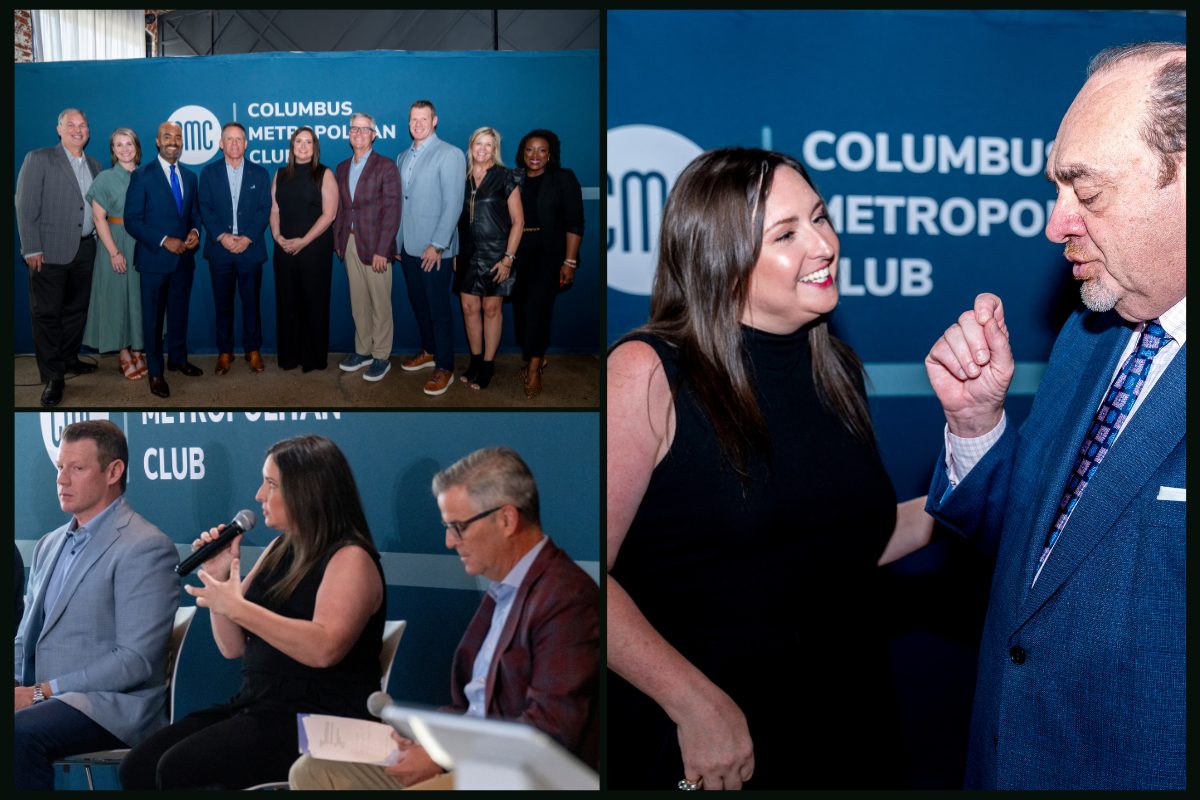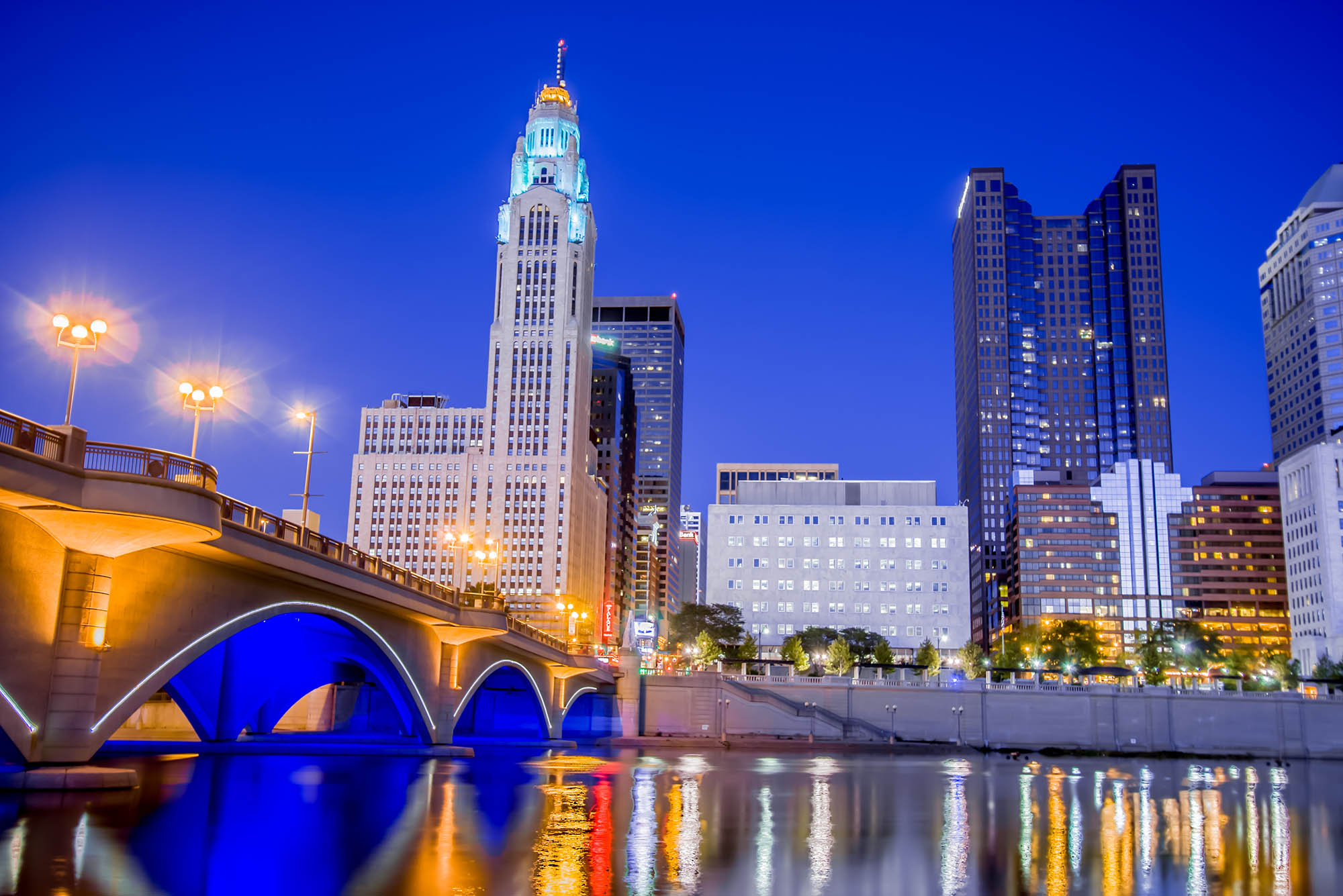
Downtown Columbus is in the middle of a big transition. Buildings are changing. People are moving in at a steady pace. Developers are rethinking what Downtown can be – and so are our neighbors.
At last week’s Columbus Metropolitan Club forum, “A Downtown That Works and Lives,” I joined a panel of civic leaders, developers and planners to talk about what that really means – not just on paper but on the ground. As someone who lives Downtown, engages with public and private partners in my role with MurphyEpson and serves as Advocacy Chair for the Downtown Residents Association of Columbus (DRAC), I came to share the perspective of those of us who experience the wins and growing pains of this moment every single day.

As of mid‑2025, Downtown Columbus has approximately 12,500 residents. And we’ve come a long way from the version of DRAC that was known primarily for being a group of longtime property owners. Today, we’re more than 300 members strong, with more than 80 business members — and our makeup is much more reflective of what Downtown looks like now.
Yes, we still have Baby Boomer business owners and longtime residents, but we also have a surge of millennials who are choosing to live Downtown. They’re often car-free, they’re engaged and they believe in the potential of city living – not just as a lifestyle, but as a community.
That mix matters. It changes what we advocate for. It changes the kinds of spaces we need. And it changes the energy of our streets.
Being car-free Downtown is absolutely possible – and I say that as someone living it. But I also recognize that comes with some privileges: stable housing, flexible work and access to amenities. It works well for me, but it should work better for more people.
Right now, the biggest challenge is affordability. The market is hot, and while that brings investment and activity, it also prices people out. This isn’t a knock on developers: building housing, especially adaptive reuse, is expensive. But it means we need to be talking about solutions that meet people where they are.
We need more variety in what’s available: smaller units, more micro housing and flexible layouts like 1.5 bed / 1.5 bath options that don’t require someone to jump a full rent bracket. I’ve had so many conversations with people – young professionals, aging residents and families – who say, “I want to stay Downtown, but it’s just too much right now.”
Safety downtown is both a fact and a feeling. It's a reality shaped not just by crime statistics, but by how people experience public space. It’s a layered topic that touches everything from lighting and activation to trust and perception. One local bartender on Gay Street, who works late nights and lived in other downtowns, recently shared with me that he regularly sees women walking their dogs after midnight: a quiet but powerful sign of comfort and belonging. While challenges still exist, stories like that offer a glimpse of what’s working and where continued investment in thoughtful design and programming can build confidence in the public realm.
Another shift I’ve noticed lately: more families. Anecdotally, I’ve had more and more people come up to me asking if there’s a Downtown “cohort” for them. And it’s a great question — do we build the amenities first and hope families come, or do we wait until we see demand?
Columbus Commons is a wonderful start. It’s a family-friendly anchor. But there’s still room to grow. If we want to be serious about welcoming families Downtown, we need more small-lot homes with a bit of greenspace. The kind of housing that feels urban, but livable for more than just one person and a cat.
Public space is a big win for Downtown right now. But mobility – especially around major events – is a mixed bag. It doesn’t make sense that drivers can cross the Broad Street bridge during events, but people on scooters can’t. Or that they get slowed after 11pm, even when people are trying to get home (keep in mind, COTA provides extended late-night service on most major routes in Columbus, as well).
We’ve made great investments – the Scioto Mile, the Peninsula, greenways – but the last mile of travel still needs work. If we want a Downtown that really lives and breathes 24/7, we have to connect it better.
The same goes for street-level retail. There are too many ground-floor spaces sitting empty, draped off. It’s frustrating to see that in such a beautiful, central neighborhood. I know those are private business decisions – and not something the government can always control – but it has a huge impact on how people experience Downtown.
We’re clearly in a moment. Membership in DRAC is up. Interest in living Downtown is up. Development is moving quickly. And that’s exciting. But now’s the time to be intentional.
What kind of Downtown do we want to be? Who gets to live here? How do we keep it feeling local and not just luxury?
This isn’t just about buildings or even just about housing. It’s about belonging, opportunity and equity. It’s about creating a city core that works for everyone – from renters of all ages to longtime owners.
This forum was recorded live at The Ellis in Italian Village on July 23, and I’m glad we had the chance to have the conversation in front of a room full of engaged residents, neighbors and civic thinkers.
Thank you to fellow panelists Greg Davies (Downtown Columbus, Inc.), Michael Stevens (City of Columbus) and Brad DeHays (Connect Real Estate), as well as moderator Rodney Dunigan (WSYX ABC 6) and to the Columbus Metropolitan Club and The Ellis for hosting a timely and important conversation.
We’re not just changing our skyline. We’re building the next version of Downtown Columbus. Let’s make sure it reflects the people who live here – and the ones we hope will.
You can watch the forum by clicking here.
